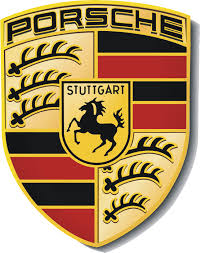911 Carrera 4 Cabriolet (997) F6-3.6L (2006)
/f6-3.6l/Page-241003.png)
^
Maximum tyre seating pressure 4 bar! This value must not be exceeded.
^
For tyre seating pressure over 3.3 bar (possible in the event that several unfavorable factors should occur simultaneously / max. 4.0 bar
permissible) use a tyre filling cage.
-
Fill tyre. Important: At the latest when the pressure reaches 3.3 bar (max. 4.0 bar in tyre filling cage), the tyre beads (coming out of the deep bed)
must pop over the hump of the rim bead in order to avoid fractures of the bead core. If necessary, interrupt the process and generously coat all
necessary surfaces with recommended lubricant (tyre mounting paste). Then repeat the process.
^
Important: Damage to the bead core resulting from incorrect tyre assembly/disassembly will cause an increase in fluctuations in power
(radial/lateral fluctuation in power). This is apparent when you roll the tyre on the driving surface.
-
Uncontrolled matching: Turn the tyre on the wheel by 90 degrees or 180 degrees if necessary in order to achieve an acceptable value with regard
to rolling smoothness (true running, imbalance and distribution of balance weights).
-
Controlled matching: With a balancing machine with matching program. In most cases, this produces an even better result with regard to the
rolling smoothness (true running, imbalance and distribution of the balance weights) than can be achieved with uncontrolled matching.
-
Check the fit of the tyre on the rim using the bead centering line.
-
Set the prescribed tyre pressure.
Further to 2A: Measuring radial force variations
-
Tension wheel on balancing machine with radial force variation measurement (vibration monitoring system).
-
Observe the operating instructions of the balancing machine (adjust the machine from time to time).
-
The contact surfaces of the wheel on the balancing flange (leveling surface) and the centering surface must be clean.
-
The display disabling function must be switched off.
-
Adjust tyre air pressure to 2.6 bar (best test pressure) when balancing and measuring radial force variations.
-
Particular attention must be paid to the wheel mounting when measuring radial force variations and when balancing. Using the special pressure
pieces provided by the manufacturer of the balancing machine will ensure that wheels are balanced accurately and there is the highest possible
repeat accuracy. Observe the operating instructions.
Maximum deviations permitted in radial force variation results:
If these values are exceeded, the tyre must be matched on the rim.
If these values are not reached, the wheel must be balanced.
Note: A new tyre must be fitted if the radial force variation cannot be reduced to the values listed in the table.
Further to 2B: Stationary balancing with optimization of railing smoothness
-
Clamp wheel on stationary balancing machine.
-
Observe the operating instructions for the balancing machine. Adjust the machine according to the manufacturer's instructions (if necessary).
-
The contact surfaces of the wheel on the balancing flange (leveling surface) and the centering surface must be clean.
-
Centre (clamp) the wheel from the inside with centering clamping device - see Workshop Equipment Manual, Chapter 3. This centering clamping
device fits all wheel-balancing machines approved by Porsche.
Check radial and lateral runout during the first measuring run. Values of less than 1.0 mm are desirable - around 0.5 mm would be better.
